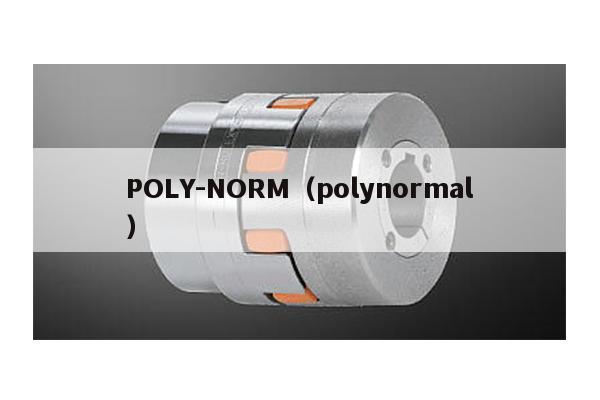
本文目录一览:
设计一个一元稀疏多项式简单计算器。
#includestdio.h
#includemalloc.h
#includeiostream.h
typedef struct Polynode
{
float coef; //系数
int exp; //指数
struct Polynode *next;
}*Poly,Polynode; //Poly为结点指针类型void Insert(Poly p,Poly head)
{
if(p-coef==0) //系数为0时释放结点
free(p);
else
{
Poly q1,q2;
q1=head;
q2=head-next;
while(q2p-expq2-exp)
{ //后移查找插入位置
q1=q2;
q2=q2-next;
}
if(q2p-exp==q2-exp)
{ //将指数相同的相合租丛并
q2-coef+=p-coef;
free(p);
if(!q2-coef) //系数为袜型瞎0时释放结点
{
q1-next=q2-next;
free(q2);
}
}
else
{
p-next=q2;
q1-next=p;
}
}
}//InsertPoly CreateList(Poly head,int m)
{ //建立一个头指针为head、项数为m的一元多项式
int i;
Poly p;
Polynode *q;
p=head=(Poly)malloc(sizeof(struct Polynode));
head-next=NULL;
for(i=0;im;i++)
{
p=(Poly)malloc(sizeof(struct Polynode));//建立告空新结点以接收数据
cout"请输入第"i+1"项的系数与指数: ";
cinp-coefp-exp;
Insert(p,head); //调用Insert函数插入结点
}
q=head-next;
while(q!=NULL)
{
cout"系数:"q-coef"\t""指数 : "q-expendl;
q=q-next;
}
return head;
}//CreatePolyvoid DestroyList(Poly p)
{ //销毁多项式p
Poly q1,q2;
if(p-next!=NULL)
{
q1=p-next;
q2=q1-next;
while(q1-next)
{
free(q1);
q1=q2;//指针后移
q2=q2-next;
}
}
}int OutputList(Poly P)
{ //输出多项式
Poly q=P-next;
int flag=1;//项数计数器
if(!q)
{ //若多项式为空,输出0
cout" 0 "endl;
return(0);
}
while (q)
{
if(q-coef0flag!=1) //系数大于0且不是第一项
cout"+";
if(q-coef!=1q-coef!=-1)//系数非1或-1的普通情况
{
coutq-coef;
if(q-exp==1)
cout"X";
else if(q-exp)
cout"X^"q-exp;
}
else
{
if(q-coef==1)
{
if(!q-exp)
cout"1";
else if(q-exp==1)
cout"X";
else if(q-exp)
cout"X^"q-exp;
}
if(q-coef==-1)
{
if(!q-exp) cout"-1";
else if(q-exp==1) cout"-X";
else cout"-X^"q-exp;
}
}
q=q-next;
flag++;
}//while
coutendl;
return(0);
}//OutputPolyint compare(Poly a,Poly b)
{
if(ab)
{
if(!b||a-expb-exp) return 1;
else if(!a||a-expb-exp) return -1;
else return 0;
}
else if(!ab) return -1;//a多项式已空,但b多项式非空
else return 1;//b多项式已空,但a多项式非空
}//comparePoly AddPoly(Poly pa,Poly pb)
{//求解并建立和多项式a+b,返回其头指针
Poly qa=pa-next;
Poly qb=pb-next;
Poly headc,hc,qc;
hc=(Poly)malloc(sizeof(struct Polynode));//建立头结点
hc-next=NULL;
headc=hc;
while(qa||qb){
qc=(Poly)malloc(sizeof(struct Polynode));
switch(compare(qa,qb))
{
case 1:
{
qc-coef=qa-coef;
qc-exp=qa-exp;
qa=qa-next;
break;
}
case 0:
{
qc-coef=qa-coef+qb-coef;
qc-exp=qa-exp;
qa=qa-next;
qb=qb-next;
break;
}
case -1:
{
qc-coef=qb-coef;
qc-exp=qb-exp;
qb=qb-next;
break;
}
}//switch
if(qc-coef!=0)
{
qc-next=hc-next;
hc-next=qc;
hc=qc;
}
else free(qc);//当相加系数为0时,释放该结点
}//while
return headc;
}//AddPolyPoly SubtractPoly(Poly pa,Poly pb)
{//求解并建立和多项式a-b,返回其头指针
Poly qa=pa-next;
Poly qb=pb-next;
Poly headc,hc,qc;
hc=(Poly)malloc(sizeof(struct Polynode));//建立头结点
hc-next=NULL;
headc=hc;
while(qa||qb)
{
qc=(Poly)malloc(sizeof(struct Polynode));
switch(compare(qa,qb))
{
case 1:
{
qc-coef=qa-coef;
qc-exp=qa-exp;
qa=qa-next;
break;
}
case 0:
{
qc-coef=qa-coef-qb-coef;
qc-exp=qa-exp;
qa=qa-next;
qb=qb-next;
break;
}
case -1:
{
qc-coef=-qb-coef;
qc-exp=qb-exp;
qb=qb-next;
break;
}
}//switch
if(qc-coef!=0)
{
qc-next=hc-next;
hc-next=qc;
hc=qc;
}
else free(qc);//当相减系数为0时,释放该结点
}//while
return headc;
}//AddPolyPoly MultiplyPoly(Poly pa,Poly pb)
{//求解并建立积多项式a*b,返回其头指针
Poly hf,pf;
Poly qa=pa-next;
Poly qb=pb-next;
hf=(Poly)malloc(sizeof(struct Polynode));//建立头结点
hf-next=NULL;
for(qa=pa-next;qa;qa=qa-next)
{
for(qb=pb-next;qb;qb=qb-next)
{
pf=(Poly)malloc(sizeof(struct Polynode));
pf-coef=qa-coef*qb-coef;
pf-exp=qa-exp+qb-exp;
Insert(pf,hf);//调用Insert函数以合并指数相同的项
}
}
return hf;
}//MultiplyPolyvoid DevicePoly(Poly pa,Poly pb)
{//求解并建立商多项式a/b,返回其头指针
Poly hf,pf,temp1,temp2;
Poly qa=pa-next;
Poly qb=pb-next;
hf=(Poly)malloc(sizeof(struct Polynode));//建立头结点,存储商
hf-next=NULL;
pf=(Poly)malloc(sizeof(struct Polynode));//建立头结点,存储余数
pf-next=NULL;
temp1=(Poly)malloc(sizeof(struct Polynode));
temp1-next=NULL;
temp2=(Poly)malloc(sizeof(struct Polynode));
temp2-next=NULL;
temp1=AddPoly(temp1,pa);
while(qa!=NULLqa-exp=qb-exp)
{
temp2-next=(Poly)malloc(sizeof(struct Polynode));
temp2-next-coef=(qa-coef)/(qb-coef);
temp2-next-exp=(qa-exp)-(qb-exp);
Insert(temp2-next,hf);
pa=SubtractPoly(pa,MultiplyPoly(pb,temp2));
qa=pa-next;
temp2-next=NULL;
}
pf=SubtractPoly(temp1,MultiplyPoly(hf,pb));
cout"商是:";
OutputList(hf);
cout"余数是:";
OutputList(pf);
}//DevicePolyfloat ValuePoly(Poly head,float x)
{//输入x值,计算并返回多项式的值
Poly p;
int i;
float sum=0,t;
for(p=head-next;p;p=p-next)
{
t=1;
for(i=p-exp;i!=0;)
{
if(i0)
{
t/=x;
i++;
}//指数小于0,进行除法
else
{
t*=x;
i--;
}//指数大于0,进行乘法
}
sum+=p-coef*t;
}
return sum;
}//ValuePolyPoly Derivative(Poly head)
{//求解并建立a的导函数多项式,并返回其头指针
Poly q=head-next,p1,p2,hd;
hd=p1=(Poly)malloc(sizeof(struct Polynode));//建立头结点
hd-next=NULL;
while(q)
{
if(q-exp!=0)
{ //该项不是常数项时
p2=(Poly)malloc(sizeof(struct Polynode));
p2-coef=q-coef*q-exp;
p2-exp=q-exp-1;
p2-next=p1-next;//尾插法插入结点
p1-next=p2;
p1=p2;
}
else if(q-exp==0) //该项为常数项
break;
q=q-next;
}
return hd;
}//Dervativeint main()
{
int m,n,flag=0;
float x;
Poly pa=0,pb=0,pc,pd,pe,pf;//定义各式的头指针,pa与pb在使用前付初值NULL
cout"请输入a的项数:" ;
cinm;
pa=CreateList(pa,m);//建立多项式a
cout"请输入b的项数:" ;
cinn;
pb=CreateList(pb,n);//建立多项式a
//输出菜单
cout"*********************************************************************"endl;
cout" 1.输出多项式a和b 2.建立多项式a+b 3.建立多项式a-b"endl;
cout" 4.建立多项式a*b 5.建立多项式a/b"endl;
cout" 6.计算多项式a在x处的值 7.求多项式a的导函数 8.退出程序"endl;
cout"*********************************************************************"endl;
for(;;flag=0)
{
cout"执行操作为:" ;
cinflag;
if(flag==1)
{
cout"多项式a为:";
OutputList(pa);
cout"多项式b为:";
OutputList(pb);
continue;
}
if(flag==2)
{
pc=AddPoly(pa,pb);
cout"多项式a+b为:";
OutputList(pc);
DestroyList(pc);
continue;
}
if(flag==3)
{
pd=SubtractPoly(pa,pb);
cout"多项式a-b为:";
OutputList(pd);
DestroyList(pd);
continue;
}
if(flag==4)
{
pe=MultiplyPoly(pa,pb);
cout"多项式a*b为:";
OutputList(pe);
DestroyList(pe);
continue;
}
if(flag==5)
{
DevicePoly(pa,pb);
continue;
}
if(flag==6)
{
cout"请输入x的值:x=";
cinx;
cout"多项式a的值为:"ValuePoly(pa,x)endl;
continue;
}
if(flag==7)
{
pf=Derivative(pa);
cout"多项式a的导函数为:";
OutputList(pf);
DestroyList(pf);
continue;
}
if(flag==8)
break;
if(flag1||flag8)
cout"输入错误!!!请重新选择!!";
continue;
}
DestroyList(pa);
DestroyList(pb);
return 0;
}

翻译难点2:multi-和poly-前缀形容“多”时有何不同?
poly强调数量众多的;multi不孙搜卖强调数量多,只客观反映是由多个、两个以则逗上构成的.比如multi-national不强调国家很多,只说明漏宽这是一个跨国的企业
matlab中的最小二乘法
都用上7.5啦?!
ver
-------------------------------------------------
MATLAB Version 7.3.0.267 (R2006b)
help lsqnonlin
LSQNONLIN solves non-linear least squares problems.
LSQNONLIN attempts to solve problems of the form:
min sum {FUN(X).^2} where X and the values returned by FUN can be
x vectors or matrices.
用lookfor找
lookfor least
LCM Least common multiple.
LSCOV Least squares with known covariance.
LSQNONNEG Linear least squares with nonnegativity constraints.
SPAUGMENT Form least squares augmented system.
LMS Construct a least mean square (LMS) adaptive algorithm object.
RLS Construct a recursive least squares (RLS) adaptive algorithm object.
ADAPTLMS Least mean squared (LMS) FIR adaptive filter.
ADAPTNLMS Normalized least mean squared (LMS) FIR adaptive filter.
ADAPTRLS Recursive least-squares (RLS) FIR adaptive filter.
FIRLPNORM Least P-norm optimal FIR filter design.
IIRLPNORM Least P-norm optimal IIR filter design.
IIRLPNORMC Constrained least P-norm optimal IIR filter design.
firlpnormdemo.m: %% Least Pth-norm Optimal FIR Filter Design
iirlpnormdemo.m: %% Least Pth-Norm Optimal IIR Filter Design
ECMLSRMLE Least-squares regression (with missing data).
ECMLSROBJ Objective function for least-squares regression (with missing data).
MVNRFISH Fisher information for multivariate normal or least-squares regression.
PLSR Determine impulse response coefficients via Partial Least Squares.
APRECON Banded preconditioner function for least-squares problems.
LSQCURVEFIT solves non-linear least squares problems.
LSQLIN Constrained linear least squares.
LSQNONLIN solves non-linear least squares problems.
optdeblur.m: %% Large-Scale Constrained Linear Least-Squares
ylwk.m: %YWALK Recursive filter design using a least-squares method.
FIRCLS Linear-phase FIR filter design by constrained least-squares.
FIRCLS1 Low high pass FIR filter design by constrained least-squares.
FIRLS Linear-phase FIR filter design using least-squares error minimization.
INVFREQS Analog filter least squares fit to frequency response data.
INVFREQZ Discrete filter least squares fit to frequency response data.
YULEWALK Recursive filter design using a least-squares method.
fdfirls Firls - Least Squares Module for filtdes.
SPAP2 Least squares spline approximation.
LSLINE Add least-squares fit line to scatter plot.
NLINFIT Nonlinear least-squares regression.
REGRESS Multiple linear regression using least squares.
MSSGOLAY provides least-squares polynomial smoothing of mass spectrometry
XREGLSQ linear least squares for large sparse problems
XREGPRECOND preconditioner for least squares problems
DSPBLKFIRLS Mask dynamic dialog function for least-squares FIR filter block
DSPBLKFIRLS2 Mask dynamic dialog function for least-squares FIR filter block
LCM Least common multiple.
gls_fitB.m: % LOCALBSPLINE/GLS_FITB least-squares estimation of localbspline
fit.m: % LOCALMOD/FIT obtains least squares estimate of a Local Model fit
GLS Generalized least squares (with weights)
gls_costB.m: % LOCALMOD/GLS_COSTB generalised least-squares cost function for localmod coefficients
OLS Ordinary least squares (with weights)
GLS_FITB least-squares estimation of localmulti
gls_fitB.m: % POLYNOM/GLS_FITB least-squares estimation of localpspline
gls_fitB.m: % localpspline/GLS_FITB least-squares estimation of localpspline
gls_fitB.m: % POLYNOM/GLS_FITB least-squares estimation of localpspline
gls_fitB.m: % TRUNC/GLS_FITB least-squares estimation of localtruncps
gls_fitB.m: %LOCALUSERMOD/GLS_FITB least-squares estimation of localpspline
FITMODEL Obtain least squares estimate of model
LEASTSQ least squares estimate of model
InitModel.m: % XREGINTERPRBF/INITSTORE initialises model for use by stats and leastsq
InitModel.m: %INITSTORE initialises model for use by stats and leastsq
INITSTORE initialises model for use by stats and leastsq
LEASTSQ least squares estimate of model
lsqom.m: % XREGLINEAR/LSQOM ordinary least squares fit
minpress.m: % XREGLINEAR/MINPRESS minimum press least squares fit
PRUNE Prune least squares model from last term
QRDECOMP QR decompostion for least squares
quicklsq.m: % xreglinear/LEASTSQ least squares estimate of model
FITMODEL Obtain least squares estimate of model
InitModel.m: % xreglinear/INITSTORE initialises model for use by stats and leastsq
InitStore.m: % xreglinear/INITSTORE initialises model for use by stats and leastsq
leastsq.m: % xreglinear/LEASTSQ least squares estimate of model
LEASTSQ Initialise and train neural network
genetic.m: % FITALGORITHM/NLLEASTSQ
nlleastsq.m: % FITALGORITHM/NLLEASTSQ
LEASTSQ least squares estimate of model
ROLS regularized orthogonal least squares (rols)
leastsq.m: %LEASTSQ
leastsq.m: % xregusermod/LEASTSQ
lsqopt.m: %XREGUSERMOD/LSQOPT cost function for least squares (fmincon)
optimargs.m: %XREGUSERMOD/OPTIMARGS input arguments for least squares optimisation
APRECON Banded preconditioner function for least-squares problems.
CFLSQCURVEFIT Solves non-linear least squares problems.
CFLSQLIN Constrained linear least squares.
LSQNCOMMON Solves non-linear least squares problems.
LSQSUB Linear least squares constrained subproblem.
NLSQ Solves non-linear least squares problems.
SEARCHQ Line search routine for FMINU and LEASTSQ functions.
SNLS Sparse nonlinear least squares solver.
FQUAD Evaluate quadratic or linear least squares function.
LSQNCOMMON Solves non-linear least squares problems.
NLSQ Helper function that solves non-linear least squares problems.
SLLSBOX Linear least-squares with bounds
SNLS Sparse nonlinear least squares solver.
LSQISOTONIC Isotonic least squares.

